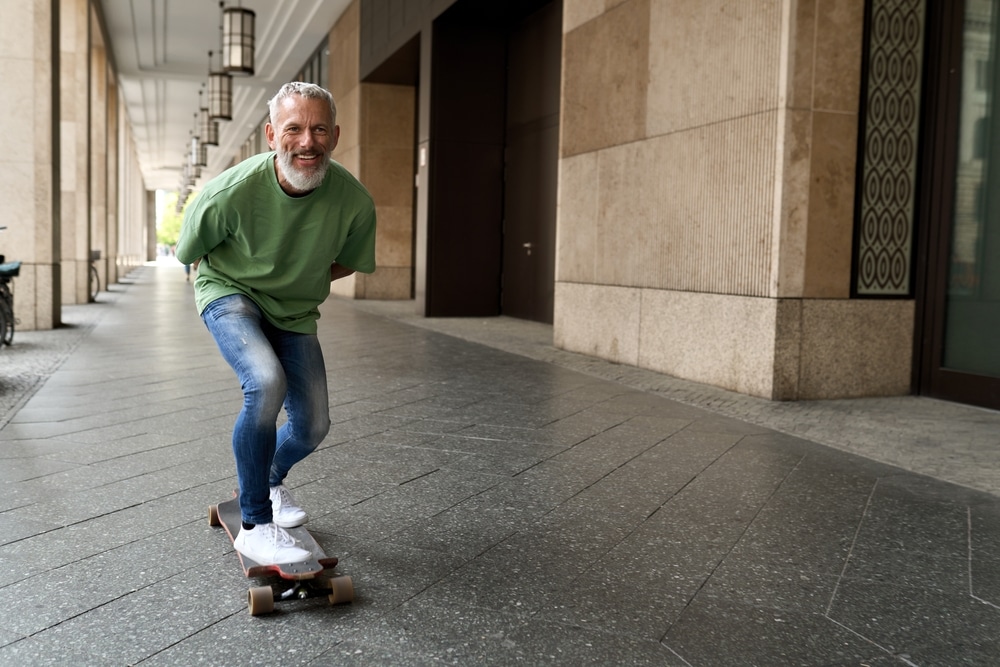Maintaining a healthy smile is important, not just for aesthetics, but for overall oral health and function. When tooth loss occurs, it can lead to a series of complications, including significant bone loss within the jaw.
Below, we will delve into the causes and consequences of tooth and bone loss, from the initial event to long-term effects on the oral structure. We’ll also explore the various types of bone grafts available, as well as how our bone grafting procedures mitigate these issues. Contact our California office to schedule an appointment for your bone grafting procedure!
What Happens When I Lose A Tooth Or Multiple Teeth?
The best way to explain this is that there are two types of bone in the jaws.
- The first type is called basilar bone, which forms the general shape of the jaws.
- The second type is the alveolar bone which supports the teeth in the jaws and is more spongy in nature.
Just like how soil on a hill depends on the presence of grass, trees, and flowers to prevent erosion when it rains, our jawbone relies on the stimulation of tooth roots to maintain integrity and strength. When we lose a tooth or multiple teeth, the alveolar bone can gradually diminish. It follows the principle of “use it or lose it,” highlighting the importance of regular dental stimulation for bone health.
This is why when you look at someone who has lost several or all their teeth, they appear older because the alveolar bone has worn away, and only the shape-forming bone (basilar) bone has survived. In addition to tooth loss, you can lose bone due to traumatic extraction, infection, jaw fracture, periodontal disease, etc.
Studies have shown that once a tooth is lost, bone turnover starts right away and is maximal at about three weeks to three months. If there is no bone stimulation with a dental implant, then the bone will start resorbing or washing away. You can lose two millimeters or more of bone within the first six months in all directions (horizontal, vertical, and mesial-distal, aka front to back). From this point, you will continue to lose bone unless a dental implant is placed in the bone to keep it stimulated.


Does Bone Grow Back?
Once you lose bone, that bone cannot grow back, and this is how bone grafting procedures have developed in order to place bone back to pre-extraction or near pre-extraction bony architecture.
What Types Of Bone Grafting Are Available?
Depending on the area and amount of bone needed, there are several types of bone we can use in a grafting procedure. These include the below options.


Autogenous
Autogenous bone refers to bone tissue that is sourced from within the individual’s own body. This self-derived bone can be obtained from various areas such as the mouth, chin, knee, or hip region.
Allogeneic Or Cadaver Bone
Allogeneic or cadaver bone refers to donated bone that undergoes rigorous testing and treatment to prevent the transmission of bacteria, viruses, and diseases.


Xenogeneic
Xenogeneic bone refers to bone grafts sourced from other species, such as cows or pigs. These grafts undergo rigorous testing and treatment to prevent the transmission of bacteria, viruses, and diseases.
Synthetic Bone
Synthetic bones, crafted by humans in specialized laboratories, are artificial alternatives that closely mimic the properties of natural bone.
There are several types of grafting procedures that are available, with the simplest type called socket grafting, which is done at the time of extraction. Other types of dental bone grafting are:
- Onlay bone graft
- Sinus lift or sinus augmentation
- Ridge split augmentation
- Sandwich grafting

Platelet Rich Plasma
In addition to bone grafting, we also will use platelet rich plasma (PRP) by drawing your blood and obtaining an ultra-high concentration of platelets which we will mix with bone. This allows bone and tissue to heal faster and better.
Here at Sacramento Surgical Arts, our oral surgery team is dedicated to providing you with safe bone grafting procedures in our comfortable environment. We have years of experience providing a variety of oral surgery procedures to our patients throughout the area. Our team is committed to excellent customer service, and we go above and beyond to ensure that you receive the best possible care.
We offer same-day appointments if you find yourself in need of emergency dental treatment. If you would like to request more information about bone grafting procedures, we would be happy to answer any questions that you may have about the procedure.
Contact us to request an appointment with an oral surgeon in California.
